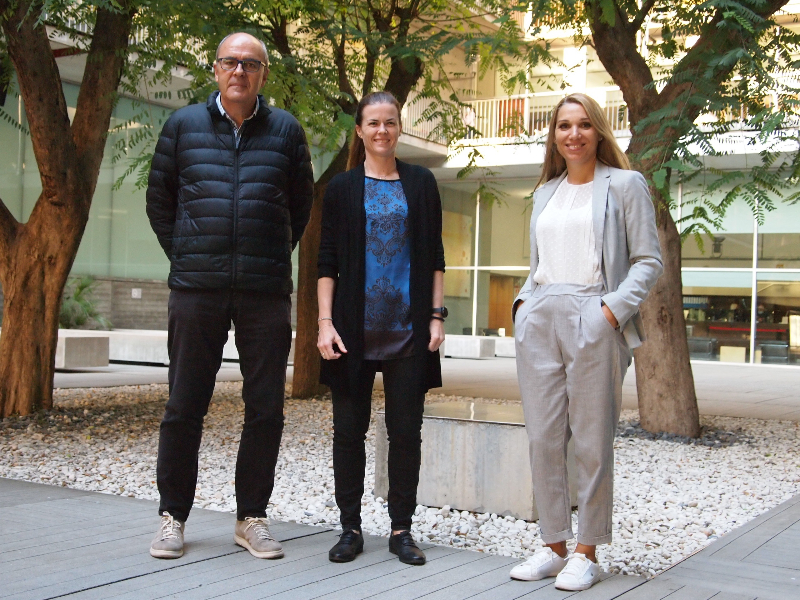
Mixing alcohol with energy drinks can lead to a predisposition to drive even though the ability to do so is diminished. This has been revealed by a study published in the International Journal of Neuropsychopharmacology, funded by the Directorate General of Traffic (DGT). Researchers from the Hospital del Mar Medical Research Institute (IMIM-Hospital del Mar), the Institute of Neuropsychiatry and Addictions at Hospital del Mar (INAD), the Magnetic Resonance Unit in the Radiology Department at Hospital del Mar, and the Germans Trias i Pujol Research Institute (IGTP), as well as the CIBER on Physiopathology and Nutrition (CIBEROBN) took part in the study.
The combination of these two drinks generates a false sense of security in those who consume them, according to this research. However, their ability to drive a car is still affected by their alcohol intake. "The study concludes that mixing energy drinks with alcohol, which is very fashionable among young people, predisposes to drink-driving.
But these drinks with a high caffeine content are not able to counteract the detrimental effects of alcohol on different driving-related skills, such as reaction time or coordination between vision and motor skills", explains the first author of the study, Dr. Clara Pérez-Mañá, currently a researcher at the IGTP and who at the time of the study was part of the Integrated Pharmacology and Systems Neurosciences Research Group at the IMIM-Hospital del Mar.
The equivalent of three cocktails
The researchers analysed the behaviour and reactions of sixteen healthy young people who were given different drinks in different sessions: just alcohol (60 grams, the equivalent of three cocktails); alcohol mixed with energy drinks (equivalent to three cans, or 240 grams of caffeine); only energy drinks; or water. They all undertook various subjective and objective tests to analyse their fitness and performance, as well as blood tests to check their blood alcohol and caffeine levels.
The result was that, although adding the energy drinks reduced the sedative effect of the alcohol and slightly improved the volunteers' performance, their blood alcohol concentrations still indicated that they were not fit to drive. In fact, they themselves admitted to being just as intoxicated when drinking alcohol alone as when drinking it in combination with several cans of energy drinks. However, the stimulant effect of caffeine-based drinks made them more likely to drive if they had to. This leads to a high risk of potentially suffering or causing a traffic accident, as their driving abilities were clearly impaired by the alcohol intake. "No matter how much you combine the two drinks, if you drink, you are still at risk. Mixing them means you make a worse assessment of the conditions when deciding whether you can drive or not", says Dr. Pérez-Mañá. "In other studies by the same research group on the interaction between alcohol consumption and psychostimulants other than caffeine, such as mephedrone or MDMA (ecstasy), this dissociation between the false perception of being able to drive and poorer performance has also been observed when specific driving tasks are evaluated", notes Dr. Rafael de la Torre, the last author of the study and coordinator of the Integrated Pharmacology and Systems Neurosciences Research Group at the IMIM-Hospital del Mar.

Rafael de la Torre, Clara Pérez-Mañá and Marta Pérez.
Higher alcohol concentrations with energy drinks
Analysis of the volunteers also revealed that their blood alcohol concentrations were higher when alcohol was consumed with energy drinks. In blood, the peak was 0.75 grams per litre (g/L) with alcohol alone and 0.84 g/L in combination with the caffeinated drinks. These concentrations correspond to a moderate state of intoxication. In exhaled air, the test used to estimate a driver's blood alcohol level at a police checkpoint, the values were 0.38 mg/L and 0.40 mg/L, respectively. It should be remembered that the legal limits for driving in Spain are 0.5 g/L in blood and 0.25 mg/L in exhaled air. These limits are lower for new drivers (0.3 g/L and 0.15 mg/L). This is the first time such a relationship between the two beverages has been shown.
Caffeine concentrations in the blood of the volunteers were also increased, since alcohol inhibits its metabolism, making it harder for the body to eliminate it. This poses an added risk for people with a low tolerance to alcohol and caffeine, as it can lead to intoxication.
Reference article
Clara Pérez-Mañá, Julián Andrés Mateus, Patricia Díaz-Pellicer, Ariadna Díaz-Baggerman, Marta Pérez, Mitona Pujadas, Francina Fonseca, Esther Papaseit, Jesús Pujol, Klaus Langohr, Rafael de la Torre, Effects of Mixing Energy Drinks With Alcohol on Driving-Related Skills, International Journal of Neuropsychopharmacology, 2021;, pyab051, https://doi.org/10.1093/ijnp/pyab051
Servei de Comunicació:
Marta Calsina Freixas(ELIMINAR)
Tel:
(+34) 93 316 06 80
Doctor Aiguader, 88
08226 Barcelona
© Institut Hospital del Mar
d'Investigacions MèdiquesLegal Notice and Privacy Policy | Cookie Policy | Site Index | Accessibility | Find Us | Contact